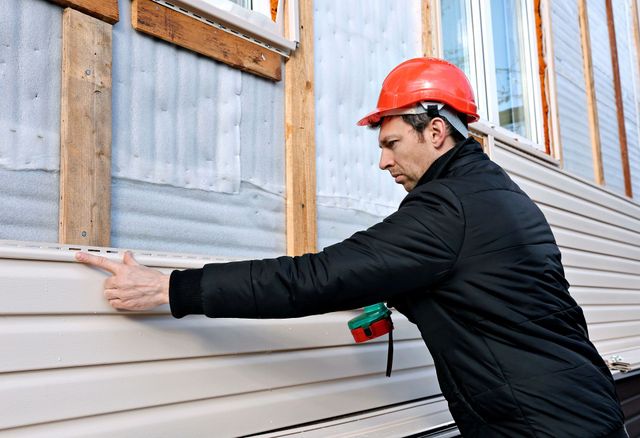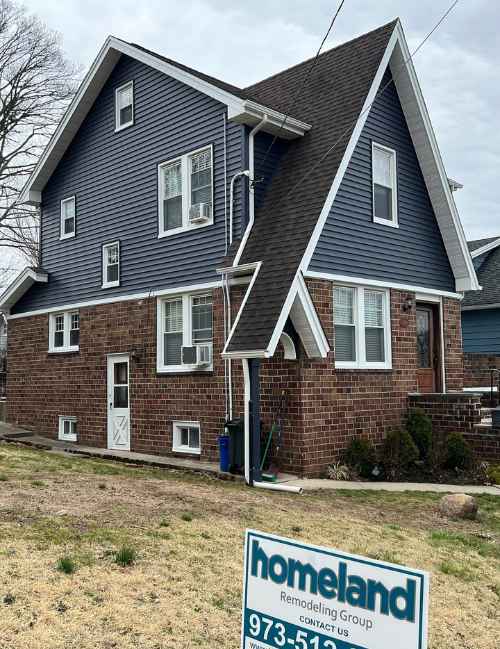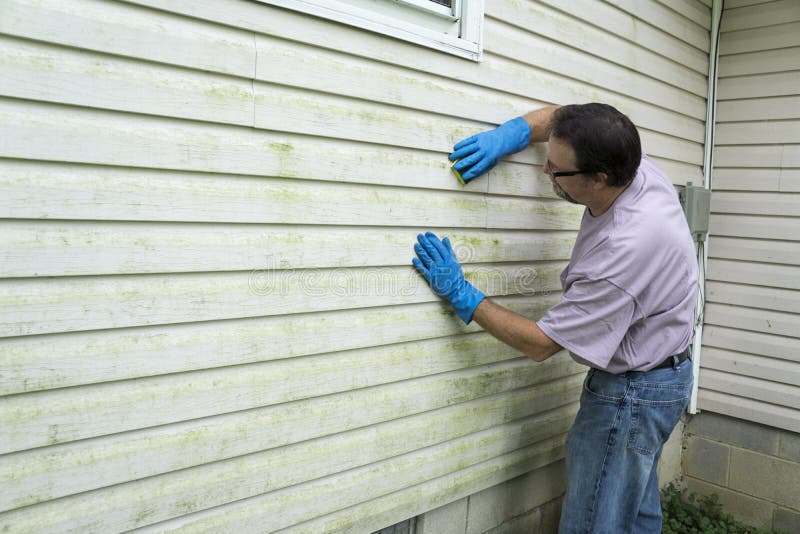The Crucial Guide to the Numerous Kinds Of Siding and Their Special Benefits
In the world of home improvement, choosing the right house siding is a critical decision that influences both aesthetic appeal and useful efficiency. The selection of materials offered, such as wood, plastic, fiber steel, brick, and concrete, each offer unique advantages that cater to different demands and preferences. Recognizing these distinctions can dramatically improve the long life and value of a home - morris siding contractor. However, with many alternatives to take into consideration, which exterior siding product really sticks out for your particular project? Discovering these choices can lead to informed decisions that line up with both style and usefulness.
Wood Siding
Timber house siding, a preferred selection for household outsides, uses an ageless aesthetic that combines all-natural elegance with architectural honesty. This house siding material is available in various styles, including clapboard, tiles, and board-and-batten, permitting house owners to personalize their façade to match their style preferences. Timber house siding is generally crafted from resilient species such as cedar, redwood, or ache, which are recognized for their durability and ability to withstand ecological stress factors.
Among the key advantages of timber siding is its excellent insulation residential or commercial properties, which can add to energy efficiency and lower heating costs. Additionally, timber exterior siding is biodegradable, making it an eco-friendly choice when sourced sustainably. Regular upkeep, including paint or discoloration, can extend its lifespan and boost its look, enabling house owners to protect the natural charm of the timber.
Nevertheless, prospective disadvantages consist of sensitivity to insects, rot, and climate damages, demanding appropriate treatment and upkeep - morris siding contractor. Despite these problems, when effectively taken care of, wood home siding can offer a stunning and durable service that improves the personality of a home while providing a cozy, welcoming ambience

Vinyl Exterior Siding
Plastic home siding has actually emerged as a leading selection for home owners looking for a low-maintenance exterior alternative that integrates sturdiness and affordability. This functional material is crafted from polyvinyl chloride (PVC), making it immune to different weather problems, consisting of moisture and UV rays. Consequently, vinyl exterior siding does not warp, rot, or discolor, making sure lasting aesthetic allure.
Among the primary benefits of plastic exterior siding is its comprehensive series of styles and colors, permitting home owners to accomplish the wanted look for their building without the need for constant repainting. In addition, plastic house siding is very easy to set up, which can significantly lower labor costs throughout building and construction or improvement tasks.
Vinyl exterior siding additionally adds to energy performance. Many choices feature insulation support, which enhances thermal efficiency, aiding to keep comfortable interior temperatures and possibly decreasing energy bills. Furthermore, its smooth surface area facilitates very easy cleaning, calling for only routine cleaning with a garden tube to remove dirt and debris.
Fiber Concrete Siding
Fiber cement home siding has actually gained traction among house owners and builders alike because of its exceptional combination of toughness and aesthetic flexibility. Composed of a combination of cement, sand, and cellulose fibers, this house siding alternative is engineered to stand up to extreme weather problems, consisting of high winds, hefty rainfall, and temperature level changes, making it a lasting choice for household outsides.

Among the key benefits of fiber concrete home siding is its resistance to insects, such as termites, and its non-combustible nature, offering enhanced fire safety and security. morris siding contractor. Furthermore, it is available in a vast variety of shades, styles, and textures, permitting property owners to attain their preferred visual without compromising efficiency
One more advantage is its reduced maintenance demands; fiber concrete home siding generally calls for painting or discoloration every 5-10 years, which is less regular than various other materials. Furthermore, its durability adds to a reduced overall expense of ownership, as it minimizes the demand for regular fixings or replacements.
Eventually, fiber concrete house siding represents an outstanding financial investment for those looking for a resistant, attractive, and versatile exterior choice, incorporating both kind and feature to boost the home's curb charm.
Steel House Siding
The allure of metal exterior siding depends on its durable toughness and modern-day visual appeal, making it a preferred option for contemporary design. Offered in materials such as aluminum and steel, metal exterior siding provides a variety of finishes and colors, permitting home owners to attain a tailored appearance that enhances their style vision.

Power effectiveness is an additional considerable benefit, as lots of metal house siding items are designed with check insulation alternatives that aid control interior temperature levels. This can result in minimized power costs gradually. Additionally, metal house siding is typically recyclable, making it an ecologically pleasant choice for sustainability-minded property owners.
The installment process for metal home siding can be fairly uncomplicated, resulting in a quicker turnaround time for building jobs. On the whole, steel house siding combines performance and style, making it a useful choice for those looking for a enduring and aesthetically appealing exterior finish.
Block and Rock Home Siding
Brick and stone home siding stands apart as a timeless choice that boosts the aesthetic charm of any kind of home. Recognized for their longevity and reduced maintenance, these products supply a remarkable return on investment while boosting the residential or commercial property's curb allure. Readily available in different colors, textures, and patterns, block and rock can be tailored to suit diverse architectural styles, from conventional to modern-day.
One of the main advantages of block and stone siding is their power efficiency. Both products have natural shielding buildings that assist manage indoor temperatures, possibly reducing heating and air conditioning prices. Additionally, they use superior fire resistance compared to various other house siding options, adding to boosted safety.
One more advantage is their long life. Brick and stone can last for years, often needing marginal you could look here upkeep beyond occasional cleansing. Unlike timber exterior siding, they are resistant to bugs and rot, making sure a lasting outside that endures the components.
Final Thought
In index recap, the selection of siding significantly influences a home's aesthetic appeal, power effectiveness, and maintenance needs. Each type of siding-- whether timber, plastic, fiber cement, steel, or brick and stone-- offers one-of-a-kind benefits customized to different property owner choices and environmental problems.
One of the main advantages of wood siding is its exceptional insulation properties, which can add to energy effectiveness and lower home heating prices. Furthermore, timber exterior siding is eco-friendly, making it an ecologically pleasant option when sourced sustainably.One of the main advantages of steel house siding is its resistance to different ecological factors.Power efficiency is one more substantial advantage, as lots of steel exterior siding items are created with insulation choices that aid control interior temperatures. Each kind of siding-- whether wood, vinyl, fiber concrete, metal, or brick and stone-- supplies unique benefits customized to various property owner choices and environmental conditions.